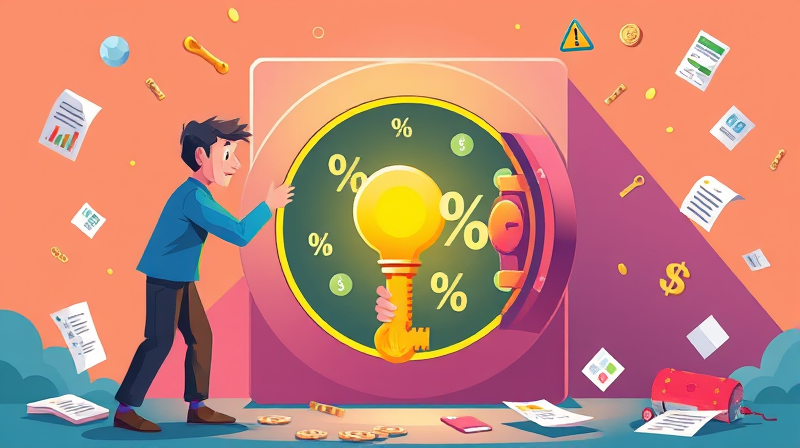Every spring, hordes of graduates toss their caps in the air, ready to embrace new beginnings. Yet for many, that moment of victory quickly shifts to concern as they face an unfolding reality: student loan debt. With a combined burden of total student loan debt in the United States surpassing $1.77 trillion today, borrowers need more than wishful thinking to regain financial control.
Whether you’re fresh out of college or a seasoned professional still paying off your education, this journey demands strategy, resilience, and unwavering commitment. In the following sections, you’ll discover practical steps, proven repayment plans, and forgiveness programs designed to turn the tide in your favor.
The Current Student Loan Landscape
Understanding the scope of the challenge is the first step toward overcoming it. Federal student loans account for $1.693 trillion of this total, spread across more than 42 million Americans. Private loans add roughly $138.5 billion to that figure, painting a picture of widespread financial stress.
Demographics reveal that 52% of federal borrowers are over 35 years old, with 20% over 50. Black borrowers and those who attended for-profit institutions often carry disproportionately higher balances. The average household with debt owes $55,777, and fields such as dental and medical school see figures approaching $300,000.
This statistical overview highlights two crucial truths: you are not alone, and actionable solutions exist to ease and eventually eliminate these balances.
Foundational Steps for Managing Loans
Before diving into repayment plans or forgiveness programs, take time to know every detail of your loans. A clear inventory transforms uncertainty into empowerment.
- Compile a list of all federal and private loans.
- Track monthly payment amounts, due dates, and current balances.
- Note interest rates, principal balances, and loan servicers.
- Identify federal loan types: PLUS, subsidized, unsubsidized.
Access your federal loan data at studentaid.gov, where you can also review repayment plan options. This step lays the groundwork for every strategy to follow.
Establishing a Realistic Budget
Once you understand your full loan portfolio, integrate payments into a comprehensive budget. Conceiving debt payments as unavoidable expenses—and not optional extras—will shift your priorities and spending habits.
Consider automating payments to avoid late fees and potentially secure an interest rate reduction through autopay. If your pay dates don’t align with due dates, request a different billing cycle; servicers often accommodate such changes.
Practical Repayment Options and Forgiveness Programs
The U.S. Department of Education offers a variety of plans tailored to different income levels and career paths. Leveraging the right plan can save thousands in interest over time.
- Income-Driven Repayment Plans: Align monthly payments with your income and family size, potentially reducing them to as low as 10% of discretionary income.
- Public Service Loan Forgiveness (PSLF): After 120 qualifying monthly payments while working for a qualifying nonprofit or government entity, remaining balances may be forgiven.
- Teacher Loan Forgiveness: Up to $17,500 in forgiveness for educators in low-income schools after five years of service.
- Total and Permanent Disability Discharge: Available to those with qualifying disabilities across multiple loan programs.
- Standard, Graduated, and Extended Plans: Traditional options that balance monthly outlays and total interest paid.
Visit the federal Loan Simulator to compare projected costs under different plans. Choosing a strategy that aligns with your long-term goals can make all the difference.
Regional and Demographic Considerations
Student debt burdens vary widely by state and population segment. For instance, Georgia, Maryland, Mississippi, and Virginia report among the highest average balances per borrower. Tailoring your approach to regional realities can unearth local resources, such as state-run assistance programs or employer partnerships.
Demographic factors also play a role. Borrowers over 35 often juggle additional responsibilities—children, mortgages, or elder care. Recognizing your unique circumstances enables you to seek specialized advice, whether through financial counselors or local nonprofit agencies.
Embracing Recent Trends and Policy Changes
After a historic dip in 2023, total student loan debt ticked upward by 2.77% in late 2024, as repayment resumed nationwide in May 2025. Staying abreast of policy shifts—such as potential interest rate adjustments or new forgiveness proposals—can provide fresh opportunities to optimize your plan.
Set calendar reminders to review your servicer’s announcements each quarter and revisit your repayment strategy annually. This habit ensures that you leverage every available benefit.
Inspiring Action: Tips for Long-Term Success
Reducing student debt is a marathon, not a sprint. Cultivating positive financial habits will help you cross the finish line stronger and more confident.
- Refinance private loans when you have a strong credit score to secure lower interest rates.
- Allocate windfalls—bonuses, tax refunds, or gifts—toward principal reduction.
- Build an emergency fund of three to six months’ expenses to avoid payment disruptions.
- Leverage employer tuition assistance or loan repayment benefits if available.
By combining precise planning with disciplined execution, you can transform your student loan from an overwhelming burden into a conquerable challenge.
Your path to financial freedom begins with informed decisions today. Embrace the strategies outlined here, stay flexible, and celebrate each milestone—no matter how small. With patience and perseverance, the summit of debt relief is well within your reach.
References
- https://educationdata.org/student-loan-debt-statistics
- https://www.bestcolleges.com/research/average-student-loan-debt/
- https://www.nerdwallet.com/article/loans/student-loans/student-loan-debt
- https://educationdata.org/student-loan-debt-by-age-group
- https://www.studentloanprofessor.com/student-loan-debt-statistics/
- https://mpde.org/student-loan-forgiveness-update-may-2025/
- https://www.consumerfinance.gov/paying-for-college/repay-student-debt/student-loan-debt-tips/
- https://smartasset.com/data-studies/student-loan-debt-2025










